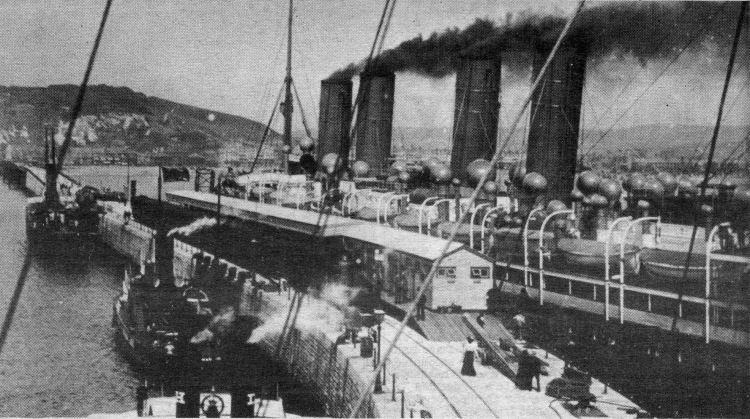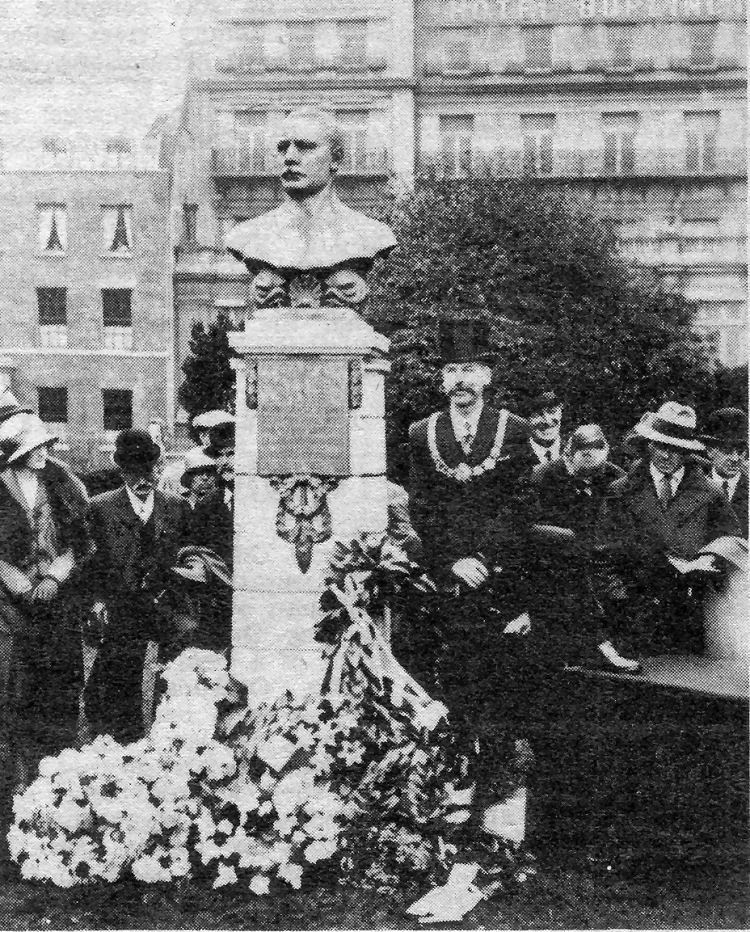Page Updated:- Sunday, 07 March, 2021. |
|||||
 Published in the Dover Express, 18 July, 1980. A PERAMBULATION OF THE TOWN, PORT AND FORTRESS. PART 97.
THE RICE FAMILY The Burlington Hotel, which was later let as flats and became known as Burlington Mansions, was a fine, commanding building, much admired. It stood on the site of Clarence House, formerly the residence of the Rice family. Mr Edward Royds Rice, a member of a Dover banking family and a Freeman of Dover, was born in Clarence House. He went on to become a Liberal MP, representing Dover in Parliament from 1837 to 1857. He was to be the last Freeman of Dover to become an MP. His father was Dover banker Mr Henry Rice, whose banking firm traded under the name of Latham, Rice and Company, and had interests in shipping. Mr Edward Rice was keenly interested in everything that occurred in the House of Commons affecting Dover and played a big part in the agitation for the construction of a national harbour at Dover. Before his death in 1878 at the age of 88, he had the satisfaction of seeing the Admiralty Pier built, which was the first big step towards the creation of the harbour we know today. He would have been gratified too, to know that the Admiralty Harbour, on an even bigger scale than he probably contemplated, was completed while his eldest son, Admiral Sir Edward Bridges Rice, was Admiralty representative on Dover Harbour Board. During his long fight to get plans passed to build a national harbour at Dover the MP fell out with his Liberal supporters. They threatened to withdraw their support when, in 1843, he enlisted the help in his campaign of Tory opponent Sir Robert Peel, who later became Prime Minister, and Duke of Wellington. The Duke while in office as Lord Warden of the Cinque Ports, lived at Walmer Castle. Mr Rice, undeterred by his critics, carried on with his campaign, putting cause before party, and the Liberal supporters must have relented for he retained his seat at the general elections in 1847 and 1852. In fact he only relinquished his seat in 1957 due to old age. Mr Rice also upset his local political opponents, namely, the Tories, by making his home at Dane Court, Tilmanstone, where he lived for over 60 years. They challenged his right to remain a Freeman owing to the distance of Tilmanstone from Dover and took the case before a Registration Court. But, when a straight line was drawn on a map from the Dover boundary to the doorstep of Mr Rice’s home it was found, much to his opponents’ disgust, that it was exactly seven miles and the case was dismissed. The Burlington hotel was first called The Clarence but soon after was changed to The Imperial. It proved a failure and was closed from 1871 until 1897, when it was extensively restored by the Frederick Hotels Company and opened under the name of the Burlington Hotel. In 1924 the hotel company acquired the Lord Warden Hotel and decided to close and sell the Burlington. In 1893, Wellesley Terrace, a very handsome pile, erected in 1846, overlooking the Granville Gardens, was transformed into the Dover Grand Hotel. Both this and the Burlington Hotel were badly damaged by enemy action during the last war and were later demolished.
CLIFF HOMES PLAN Owing to the fact that there was no room for further marine residences on the seafront various plans were put forward from time to time for the construction of prestige homes on the cliffs to the east of Dover. As long ago as 1844 when the opening of the South Eastern Railway had stimulated enterprise in Dover, it was announced that the Earl of Guilford was about to apply to Parliament for an Act to enable him to lay out, for building purposes, land to the north of the castle. It was proposed to erect about 1,500 houses in grand terraces, with an approach road from the castle jetty. The idea seemed excellent, but Dover, which had then recently built a new seafront round the bay, was not ripe for further development. The idea was later made impracticable by the building of the Convict Prison with the idea of using convict labour to complete the harbour of refuge planned when work began on building the Admiralty Pier. When, later on, the Admiralty Harbour was constructed the idea of a new Dover estate on the cliffs was revived and plans were made for building beyond Lang-don Fort, on the slopes of Fan Hole, a valley on the cliff edge. A cliff road was constructed, but left unfinished, before the first world war. The development of the Kent coalfield played a part in the abandonment of this scheme. An aerial ropeway was later erected across the spot to transport coal from Tilmanstone colliery to a huge bunker constructed on the Eastern Arm where it was later transferred to ships or railway trucks for distribution.

Seventy years ago, when Dover was a port of call for the world’s largest vessels, the Atlantic liners. This one is the Hamburg-America Line’s SS Deutschland, making its first visit, on 22nd July 1904. The liner is berthed at the Prince of Wales Pier where a boat train is waiting at the pier station. Harbour Board tugs which assisted the liner to berth are moored alongside the pier. They include one of the old paddle tugs with twin funnels, probably the Lady Vita. 
Above, a distinguished looking Mayor of Dover speaks at a ceremony at the Webb memorial on Clarence Lawn, possibly on the occasion of the 50th anniversary of Matthew’s historic' swim.

The picture above, from the Castle slopes, depicts the Promenade Pier, centre, the Burlington Hotel, right, and the Admiralty Pier, the extension of which was still being built.
|
|||||
|
If anyone should have any a better picture than any on this page, or think I should add one they have, please email me at the following address:-
|
|||||
| LAST PAGE |
|
MENU PAGE |
|
NEXT PAGE | |